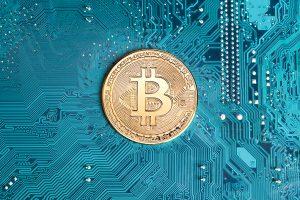BLOOMBERG
The coders who maintain Bitcoin’s blockchain are clashing over whether to stamp out the meme tokens swarming the network. A torrent of speculative coins led to a record number of transactions and an 11-fold spike in processing fees on the blockchain in May, creating a logjam and forcing the Binance exchange to temporarily halt Bitcoin withdrawals.
The tumult has since eased, but some crypto purists fret that future frenzied trading of memecoins like the frog-themed Pepe will again snarl the network and disrupt Bitcoin’s use for payments and as a store of value. They advocate deploying software to block the transactions — a kind of spam filter.
“I do think the system is being abused,†said Bitcoin developer Ali Sherief. “Bitcoin was never intended to serve as a base layer for meme tokens.†In an earlier email to the largest digital asset’s developer group, Sherief wrote that “worthless tokens threaten the smooth and normal use of the Bitcoin network as a peer-to-peer digital currency.â€
Others defend the software innovation, called Ordinals, that allows Bitcoin’s blockchain to host large numbers of memecoins and nonfungible tokens — digital collectibles — for the first time, arguing it can have wider applications. Developer Casey Rodarmor created Ordinals to enable users to inscribe digital content like videos, images and text on satoshis, the smallest unit of Bitcoin. There are 100 million satoshis in one Bitcoin.
Rodarmor’s innovation took off this year and was seized on by pseudonymous blockchain analyst Domo to develop the Bitcoin Request for Comment — or BRC-20 — standard, which led to the explosion of memecoins.
There are now about 25,000 meme tokens on the Bitcoin blockchain with a market value of roughly $475 million, according to website brc-20.io. The figure had soared past $1 billion in early May. Jameson Lopp, co-founder of crypto storage solutions provider Casa, said the Bitcoin network is meant to be an “auction market for the block space†— the place where data is stored — and Ordinals merely stoked demand for it.
As a result, viewing the memecoins as a denial-of-service attack is “like saying any form of auction is a denial of service, and whoever wins is denying all of the losers of the auction,†Lopp said. At one point meme tokens and NFTs accounted for 65% of the transactions on the Bitcoin blockchain.
 The Gulf Time Newspaper One of the finest business newspapers in the UAE brought to you by our professional writers and editors.
The Gulf Time Newspaper One of the finest business newspapers in the UAE brought to you by our professional writers and editors.
